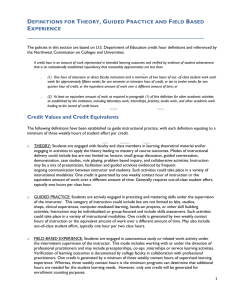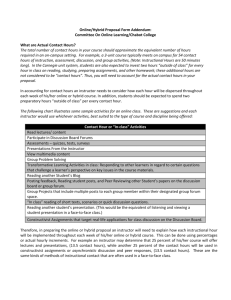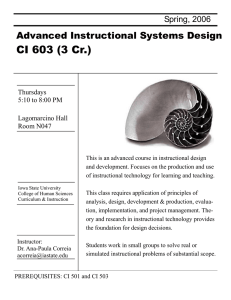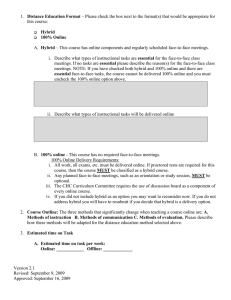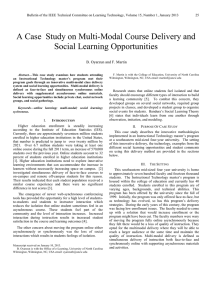D T , G
advertisement
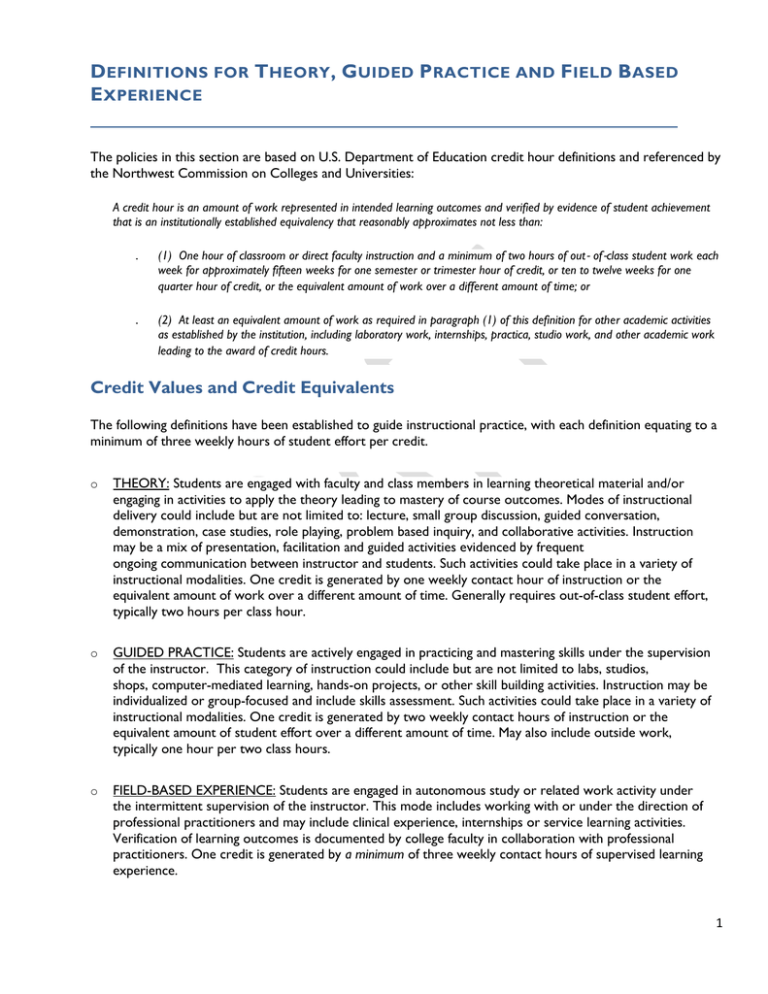
DEFINITIONS FOR T HEORY , G UIDED P RACTICE AND F IELD B ASED E XPERIENCE The policies in this section are based on U.S. Department of Education credit hour definitions and referenced by the Northwest Commission on Colleges and Universities: A credit hour is an amount of work represented in intended learning outcomes and verified by evidence of student achievement that is an institutionally established equivalency that reasonably approximates not less than: . (1) One hour of classroom or direct faculty instruction and a minimum of two hours of out‐ of‐class student work each week for approximately fifteen weeks for one semester or trimester hour of credit, or ten to twelve weeks for one quarter hour of credit, or the equivalent amount of work over a different amount of time; or . (2) At least an equivalent amount of work as required in paragraph (1) of this definition for other academic activities as established by the institution, including laboratory work, internships, practica, studio work, and other academic work leading to the award of credit hours. Credit Values and Credit Equivalents The following definitions have been established to guide instructional practice, with each definition equating to a minimum of three weekly hours of student effort per credit. o THEORY: Students are engaged with faculty and class members in learning theoretical material and/or engaging in activities to apply the theory leading to mastery of course outcomes. Modes of instructional delivery could include but are not limited to: lecture, small group discussion, guided conversation, demonstration, case studies, role playing, problem based inquiry, and collaborative activities. Instruction may be a mix of presentation, facilitation and guided activities evidenced by frequent ongoing communication between instructor and students. Such activities could take place in a variety of instructional modalities. One credit is generated by one weekly contact hour of instruction or the equivalent amount of work over a different amount of time. Generally requires out-of-class student effort, typically two hours per class hour. o GUIDED PRACTICE: Students are actively engaged in practicing and mastering skills under the supervision of the instructor. This category of instruction could include but are not limited to labs, studios, shops, computer-mediated learning, hands-on projects, or other skill building activities. Instruction may be individualized or group-focused and include skills assessment. Such activities could take place in a variety of instructional modalities. One credit is generated by two weekly contact hours of instruction or the equivalent amount of student effort over a different amount of time. May also include outside work, typically one hour per two class hours. o FIELD-BASED EXPERIENCE: Students are engaged in autonomous study or related work activity under the intermittent supervision of the instructor. This mode includes working with or under the direction of professional practitioners and may include clinical experience, internships or service learning activities. Verification of learning outcomes is documented by college faculty in collaboration with professional practitioners. One credit is generated by a minimum of three weekly contact hours of supervised learning experience. 1 Instructional Modalities Contact hours in online, hybrid, and competency-based classes may vary from more traditional face-to-face classes. Students should demonstrate equivalent learning outcomes regardless of instructional modality. Traditional (face-to-face) classes Students and instructors meet together for a certain number of hours, in a classroom and on a regular weekly schedule. Online classes Online classes consist entirely of online elements with no face-to-face component. Some online classes require students to interact with each other, the faculty and content at specific times, while others are entirely selfpaced. Hybrid classes Hybrid classes combine face-to-face classroom time with online instruction. Students in a hybrid class come to campus at scheduled times and meet face-to-face with instructors and fellow students. Many class activities are conducted online, including class work assignments, discussions and group projects. Flipped classes The flipped classroom reverses the traditional educational arrangement by delivering instructional content outside of the classroom, often online. Students spend classroom time actively engaging in concepts to clarify and apply the knowledge, under the guidance of the instructor. Competency-Based Education Competency-based education allows students to advance based on their proven mastery of a subject rather than classroom time. 2
